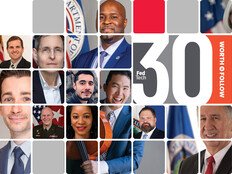Predicting the Impact of Technological Change
New technology emerges quickly. When it does, it often undermines or invalidates preferred ways of doing things. In the U.S. Air Force, new technology can disrupt our concept of operations. At the Air Force Center for Strategy and Technology (CSAT), it’s been our job to understand how new platforms might shape our future operating environment. In other words, to predict the effects of emerging technology.
In the Air Force, this means questioning assumptions that underlie our ability to hold targets at risk, from range. In other corners of the federal government, it means understanding the way agencies accomplish their missions and anticipating how new technology might disrupt those missions. Whether a mission is military or civilian, anticipating the changes that new technology can introduce requires critical thinking, a willingness to challenge norms and adherence to core organizational functions.
The rapid dispersion of information and technology creates a flood of capabilities, each recombining and evolving in unanticipated ways. These amorphous evolutions make anticipating the future very difficult. Every technology advance opens the possibility of further change. Assessing the impact of this change requires strategic planning based on a continuous analysis, not only of trends, but also of alternative futures that may (or may not) emerge.
Innovating to take advantage of opportunity is increasingly important in an environment where rapid technology proliferation means any advantage will be fleeting. The Air Force not only identifies trends and future possibilities, it must also be agile enough to adopt (and, if necessary, abandon) its preferred means as technology’s utility ebbs and flows. Historically, the Air Force has successfully anticipated change, adopting force structure to leverage emerging technologies. Government IT offices, if they don’t already, could practice similar analysis and adoption (or abandonment) exercises for technologies that may redefine the ways in which they operate.
In our case, the Air Force has anticipated major changes to technologies that underpin the means by which we project power and deliver effects. In IT departments, this might be akin to anticipating how cloud computing might radically change the way an agency delivers services — but doing so sufficiently in advance to argue alternate futures and plan accordingly.
Internal Conflict Yields Results
As CSAT studies new capabilities, it is clear that combinations of technologies (those we choose to pursue) surface only after internal conflict — periods during which airmen and policymakers debate the merits of emerging capabilities. It’s a process that anyone charged with exploiting technology to gain an advantage could undertake.
Successfully anticipating technology drivers and divining their impact requires a combination of internal thought leaders, external validation and the necessary champions to lead transformation. Senior leaders, guided by their core functions, must referee debate, question assumptions underlying current methods of operation, and nurture (then champion) uncomfortable new ideas. Change — whether it’s the development of a new missile or a cybersecurity framework, the retirement of an IT platform or a weapon system — challenges power structures, responsibilities and the identities of organizational members.
Accelerating technological change demands continuous innovation if organizations are to prepare for an emerging strategic environment. Technological innovation underpins all the Air Force does. However, it is the process of questioning assumptions, not necessarily the technologies driving change, that allows us to adapt successfully.









